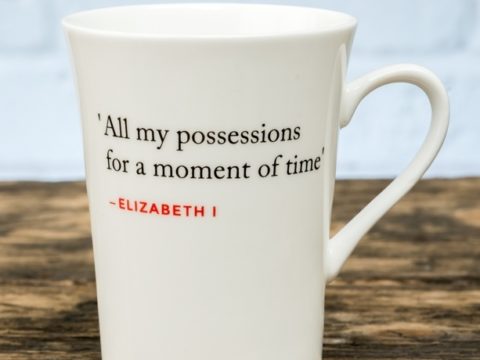Edward Seymour: Life Story
Chapter 11 : The Good Duke
One of the greatest social and economic issues of the sixteenth century was that of enclosures. The wool industry had brought great wealth to England and when much of the land previously under cultivation was turned over to pasture after the huge reduction in population that occurred in the century or so following the Black Death, that did not create a problem. But by the sixteenth century, the population was growing fast, whilst landowners continued to enclose, to increase pasturage for flocks. There was not even sufficient pasturage for cattle, to provide the milk and cheese so important to the diets of the poor – for some unknown reason, sheep milk does not seem to have held much appeal for the English. At the same time, wool prices were rising.
There were also numerous other economic factors at work that resulted in unemployment, increased crime, hunger and misery, including the debasement of the coinage, war, the increase in silver from the New World, the dissolution of the monasteries, a growing urban population and poor harvests. Tudor economists, although they were beginning to ponder the links between cause and effect, focused, like the greater part of the population, on enclosure as the root cause of economic and societal ills, and human sinfulness as the driving force in enclosure.
The voices of some scholars and political thinkers were raised against greed and injustice – an inchoate group of political writers sometimes described as the ‘commonwealth men’. At the core of their theory was the mediaeval view of the state as a body, in which each individual had his or her part to play for the benefit of all. Consequently, the growing entrepreneurial spirit, and the desire for individual profit that a society diverging from feudal ideas towards capitalism, exhibited were criticised. Not, of course, that their criticisms were new – the fourteenth century Piers Plowman touched on many similar themes of personal greed, and a lack of community spirit. A notable critic was Robert Crowly, a preacher, but also a printer, whose pamphlets circulated widely. He roundly condemned rack-renting and enclosure. Many of the more radical Protestant clergy were aware of the issues, and agreed with the commonwealth men – seeing hunger, pestilence and dearth as the result of sin. Hugh Latimer, Bishop of Worcester, had publicly preached on the evils of greed, accusing the enclosers of being ‘greedy gulls [who] would eat up men, women, and children’.
One of Somerset’s friends, John Hales, took up the same theme and may have been the author of the Discourse of the Commonweal (published in 1581, written in 1549), although modern scholarship usually attributes it to Sir Thomas Smith. Smith himself was one of Somerset’s advisers, who had argued strongly for the government to stop debasing the coinage, which had been done to finance the French and Scottish wars. For all these commonwealth men, the problems of society were moral – if everyone behaved properly, economic problems would disappear. Since humans are inherently sinful, legislation should be used to make actions against the commonwealth, such as enclosure, unprofitable.
Somerset’s conscience was stirred, and on 1st June 1548, he ordered an enquiry into enclosures, to be led by Hales. The commission was to assess how the extant legislation on enclosures was being implemented. There was plentiful legislation on the topic, dating back to the reign of Henry VII, but it was not always enforced – in part because the local justices of the peace who should have enforced it, were often the culprits. An act of 1533 had sought to limit flocks to 2,400 per owner, an act which had little effect. In addition, Hales and his team were to look into ‘the corruption and infection of private lucre grown universally among our subjects’.
There can be little doubt that Somerset had some genuine concerns for the state of society, and its poorer members, and it may not just have been his supporters who referred to him as ‘the good Duke’. In pursuit of some measure of justice, he introduced a private Act to parliament to give the tenants of his own estates, some protection from eviction, and where he did enclose land, he made provision for the tenants. Nevertheless, if he hoped that his example would set off a tidal wave of good practice from other nobles he was disappointed, perhaps because his own accumulation of wealth, and his ostentatious building project at Somerset House gave off more than a whiff of hypocrisy.
The intention of the commission was to investigate and record claims of unlicensed enclosing, rather than to take any action, but rather than proceeding in a measured way, Hales used his commission to broadcast his concerns about ‘the great dropsy and the insatiable desire of riches of some men’ as he entered each district to enquire about enclosures. His inflammatory language encouraged the poor to take the law into their own hands, and pull down illegal enclosures, whilst the landowners were outraged at attacks on their property, whether or not it were ill-gotten.
Given that many of Somerset’s fellow councillors had profited handsomely from enclosure, there was not much enthusiasm for the commission, and the rioting that ensued actively alienated some of them – including the Earl of Warwick, who blamed Hales, and, by extension, Somerset, for disturbances in areas where he held land. Pardons were issued for all those who had been found to have illegally enclosed – on the basis that the enclosures were to be removed, and that the landowners would sin no more.



